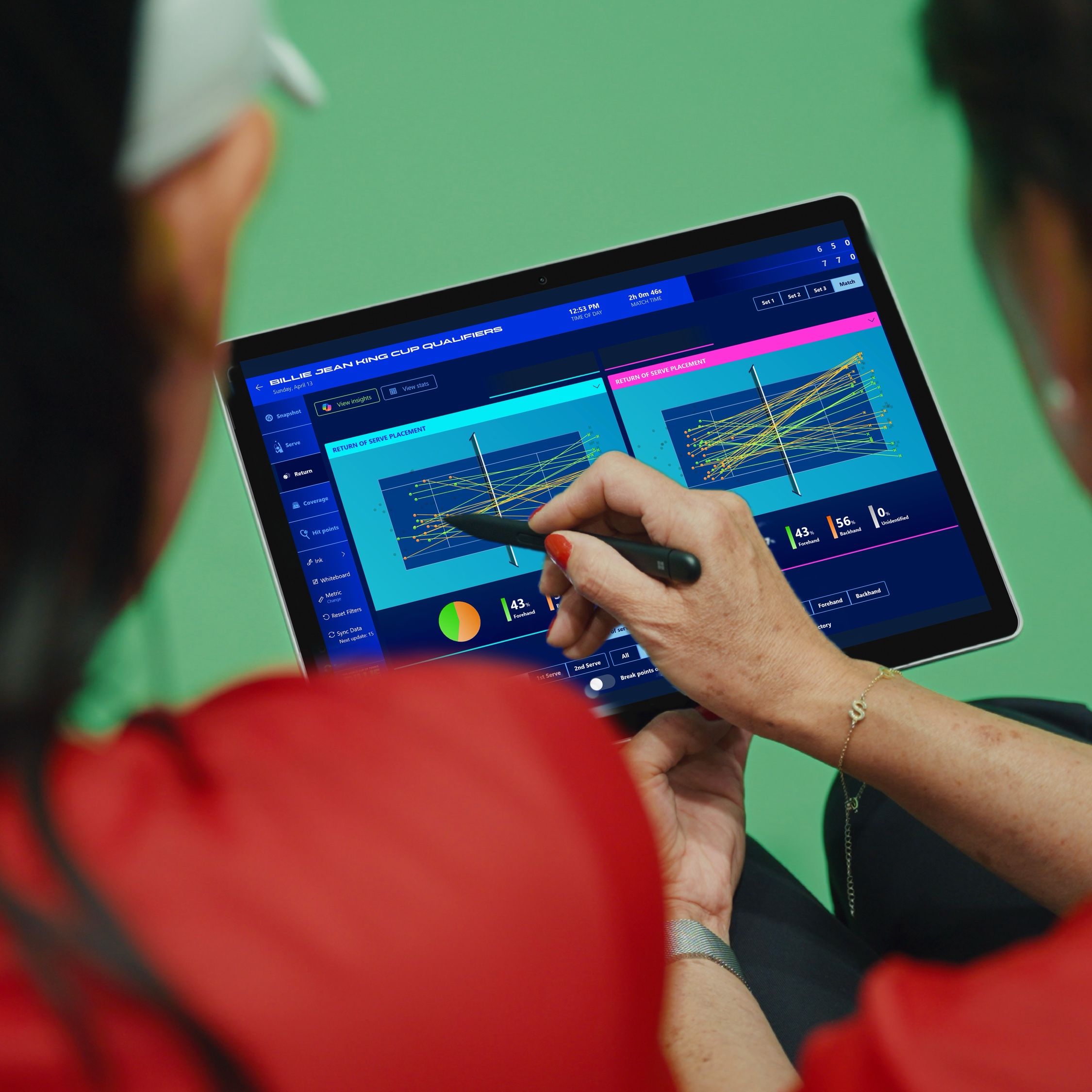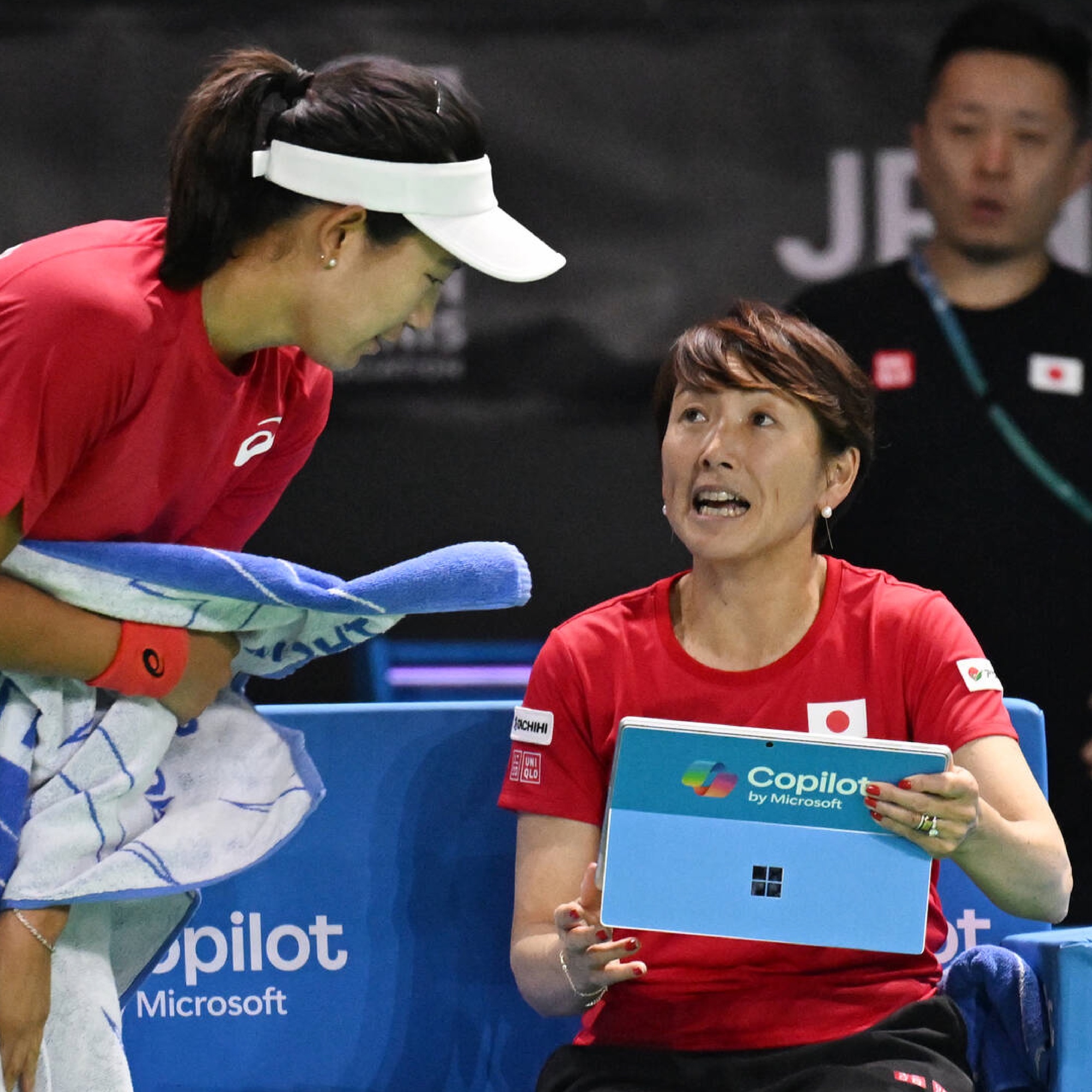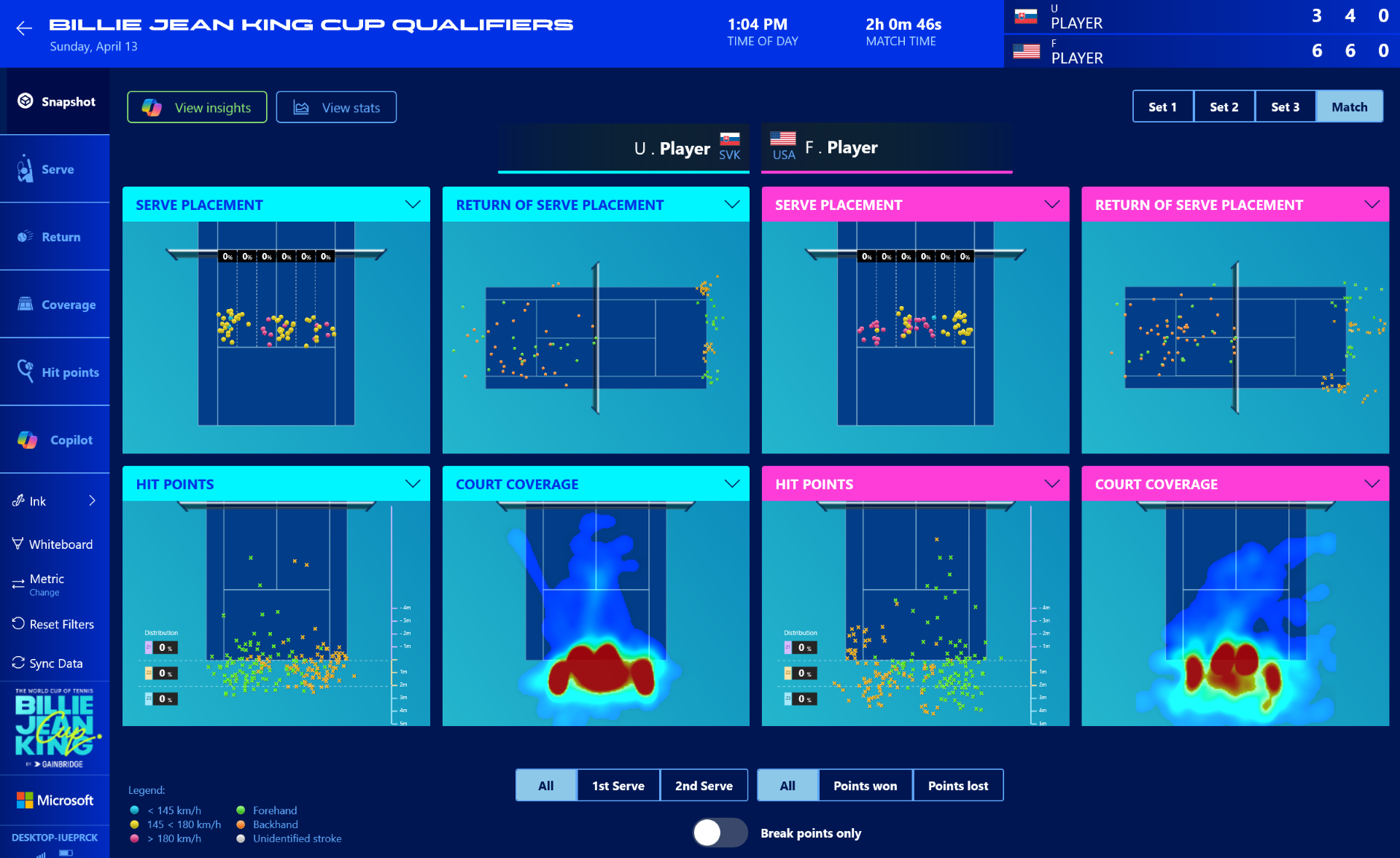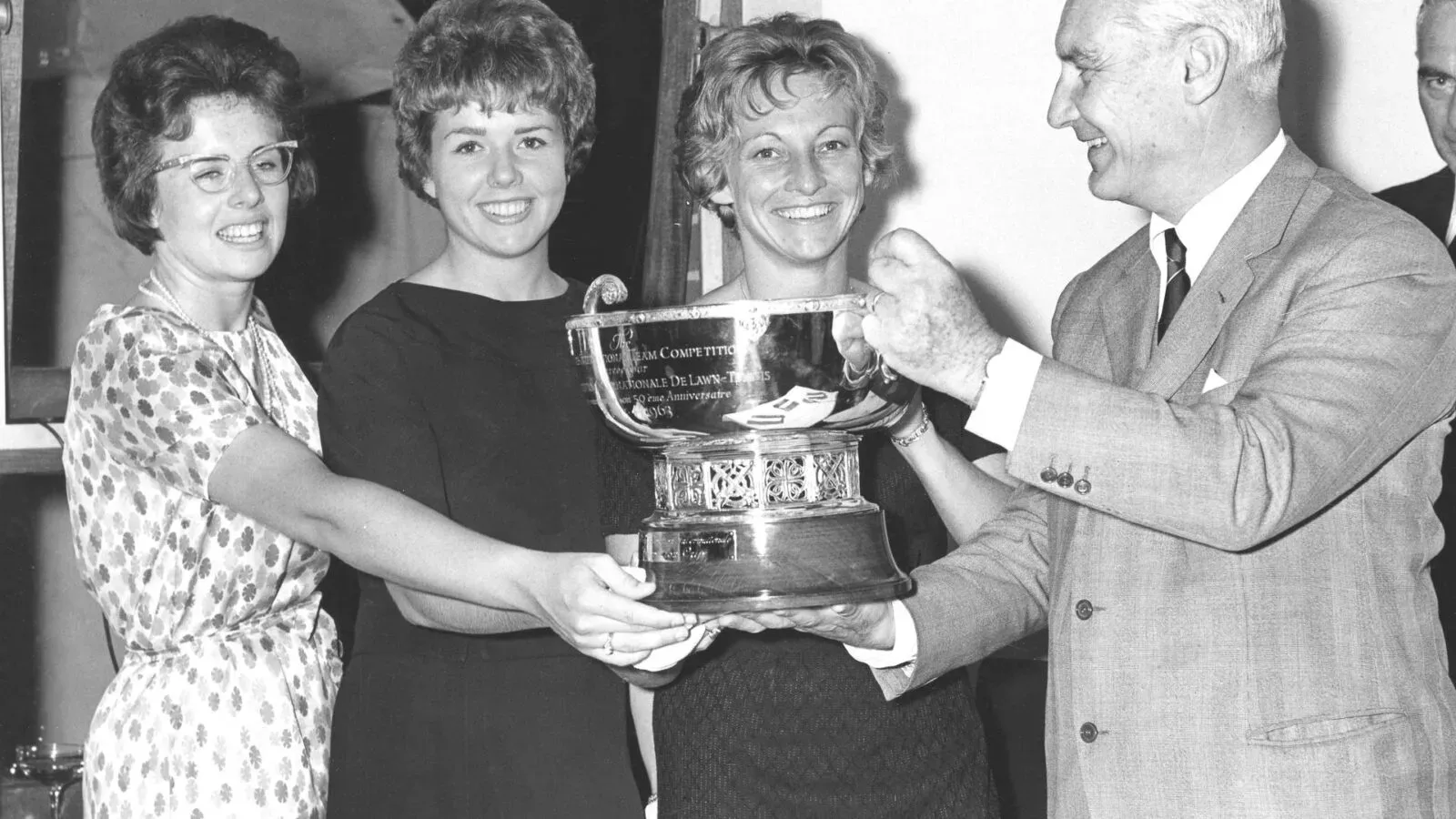The Billie Jean King Cup by Gainbridge, formerly The Fed Cup, is the largest annual team competition in women’s sports. The event—one of the few in tennis that allows coaching between games—is tapping into technology to empower players and help them take the game to the next level.
In the Billie Jean King Cup Finals, the top 8 teams from around the world compete for the biggest prize fund in women’s team sports—and the chance to be crowned world champions. Microsoft collaborated with Billie Jean King and the ITF’s Billie Jean King Cup to develop and promote technology that empowers players and coaches by offering near real-time data and insights to help inform decisions during matches. With so much at stake on the world’s stage, the International Tennis Federation (ITF) and Billie Jean King were looking at how they could innovate and provide new tools for players and captains to get a competitive edge.
Serving up stats
Through this collaboration, athletes and coaches at the Billie Jean King Cup Finals have access to advanced real-time data and AI-powered insights that help them adjust match strategy and improve player performance mid-match. At the heart of this partnership is the Match Insights App, powered by Microsoft Copilot. The app delivers data on player movement, ball trajectory, and shot accuracy, and leverages AI to synthesize it into actionable insights.



With Microsoft Surface tablets courtside, players and coaches can quickly tap into their opponents’ game plan and make in-play tweaks–all without taking their eyes off the ball.
What makes Match Insights a real game-changer? Speed, simplicity, and intelligence. The app pulls together data from various sources—the scores, the ball itself, and the players, and then uses Azure’s cloud-based technology to process, analyze, and visualize everything in near real time.
Jamie Capel-Davies, Head of Science and Technical at the ITF, adds, “This is vital in a game where you’re looking to get near real time access to the data.”
Match Insights also integrates Microsoft Copilot to deliver intelligent, real-time support for players and coaches. Players can use Copilot Search within the app to ask natural language questions and receive tailored performance insights in their native language, making analysis more intuitive and accessible. The AI-generated insights go beyond surface level stats, breaking down serve and rally data to highlight momentum shifts, strategic turning points, and pressure moments. By identifying patterns in shot placement, serve tendencies, and rally effectiveness, the app helps players pinpoint strengths and address weaknesses. These AI capabilities, layered into the real-time dashboards, empower teams to make smarter, faster decisions mid-match and walk away with deeper takeaways for future play.

Billie Jean King herself believes the app provides a huge benefit to players during their matches, since the event is one of the few in tennis that allows coaching between games.
“It’s great for this competition because as a coach or a captain sitting on the sideline, when the players change ends, you can give feedback and use all the information—the data and the analytics you’ve received the last two games,” says King. “You can say, ‘Look, here’s what’s been happening, here’s what you need to do.’”
Breaking down the data
I would love to be a player with this data. You learn about positioning, patterns, speed—all these things that can make you a better player.
Making [her]story
Today, women’s tennis is a sport of international superstars. It’s one of the few arenas to offer women “equal pay for equal play” at some of its most prominent tournaments. But, it wasn’t always that way. And one of the athletes who most vocally led the charge for equality was Billie Jean King—part of the Original 9, the nine players who risked it all in 1970 to create a sponsored women’s tour for the sport, ushering in the current era of professional women’s tennis.

When King first burst onto the scene in the early ‘60s, tennis was a very different game. It was played with wooden racquets, the idea of equal pay was laughed off the courts, and there was no such thing as a women’s tour. The first Fed Cup, held by the ITF in 1963, was an exciting opportunity for women’s teams from around the world to come together and compete. Although there was no prize money back then, it attracted some of the world’s best players and teams from 16 countries, showing that the event had staying power. Over the years, King was a member of seven winning US Fed Cup teams as a player and four winning US Fed Cup teams as a captain.
While Billie Jean King may no longer be playing on center court, she’s a huge champion to the next generation of women tennis players, who look to her with a mix of awe and admiration for her ability to keep changing the game.












